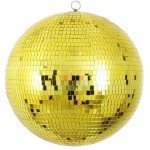Mirror Image in ASL
The concept of "mirror image" in American Sign Language (ASL) refers to the phenomenon where signs are produced with the dominant hand mirroring the movements of the non-dominant hand. This mirroring effect can be complete, where both hands perform identical actions, or partial, where one hand serves as a base or support while the other articulates the primary movement. Understanding this characteristic is crucial for both signers and learners of ASL as it influences sign formation, grammar, and overall comprehension.
Mirror image is not a universal feature across all signed languages. Some sign languages utilize a two-handed system where both hands move independently, forming distinct shapes and actions. However, in ASL, mirroring plays a significant role, particularly in signs involving two hands. This characteristic necessitates a focused approach to handshape, location, movement, and orientation, all core components of ASL grammar.
Several factors contribute to the prevalence of mirroring in ASL. One theory postulates that mirror image stems from the natural symmetry of the human body. When individuals perform actions with two hands, there's an inherent tendency for mirroring to occur. This natural proclivity is reflected in the structure of numerous ASL signs. Another perspective suggests that mirroring enhances the visual clarity of signs, making them easier to perceive and understand, particularly in dynamic communication settings.
Categorizing signs based on the type of mirroring provides a useful framework for understanding this concept. One category comprises "symmetrical signs." In these signs, both hands perform the same movement and hold the same handshape. Examples include signs like "WHAT," "PLAY," and "CAN." These symmetrical signs showcase a complete mirroring effect, reinforcing the visual impact and clarity of the communication.
Another category involves signs where mirroring is only partial. One hand, often the non-dominant hand, acts as a stationary base while the dominant hand performs the primary movement. This dynamic is exemplified by signs like "NAME," "PAPER," and "MOTHER." In these cases, the mirroring is not complete, but the relationship between the two hands remains integral to the sign's formation.
An interesting aspect of mirroring in ASL is its variability. While certain signs consistently exhibit mirroring, others demonstrate flexibility. This flexibility can be influenced by various factors, including regional dialects, individual signing styles, and the specific context of communication. For example, some signs might be mirrored in formal settings but not in casual conversations. This nuance adds complexity to the language and highlights the importance of observing and adapting to different signing styles.
Understanding the principle of mirror image has significant implications for learners of ASL. New signers often struggle with coordinating the two hands and accurately mirroring the movements. Dedicated practice and attention to detail are essential for mastering this skill. Observing experienced signers and utilizing resources like videos and dictionaries can greatly assist in developing proper mirroring techniques.
Moreover, grasping the concept of mirror image allows learners to analyze and understand the structure of signs more effectively. Recognizing the different categories of mirroring – symmetrical and partial – helps break down the complexity of signs and facilitates memorization and accurate production. This analytical approach strengthens the learner’s overall grasp of ASL grammar and enhances their communicative abilities.
As signers progress in their learning journey, they will encounter intricacies related to mirroring. These intricacies can include variations in the degree of mirroring, the impact of hand dominance, and the influence of neighboring signs in a phrase. Continued learning and exposure to diverse signing styles are crucial for refining one's understanding and application of this complex yet fundamental aspect of ASL.
The concept of mirror image underscores the visual and spatial nature of ASL. It reveals the intricate interplay between the two hands, the importance of symmetry, and the dynamic interplay between movement and form. Studying and mastering this concept is vital for both effective communication and a deeper appreciation of the richness and complexity of American Sign Language.
Further exploration of this topic could involve examining the neurological basis of mirroring, comparing mirroring across different sign languages, and investigating the role of mirroring in sign language acquisition by children. These areas of research provide valuable insights into the cognitive processes underlying sign language and the factors that shape its structure and evolution.

Mirror

Mirror

Mirror In Asl

Mirror In Asl

Mirror

Mirror Errors By Deaf M1l2 Signers Target For The Asl Sign Senior Scientific Diagram

Lesson Plan Mirror Asl Teaching Resources

Mirror In Asl

Mirror Asl Sign Age Deaf

Mirror








